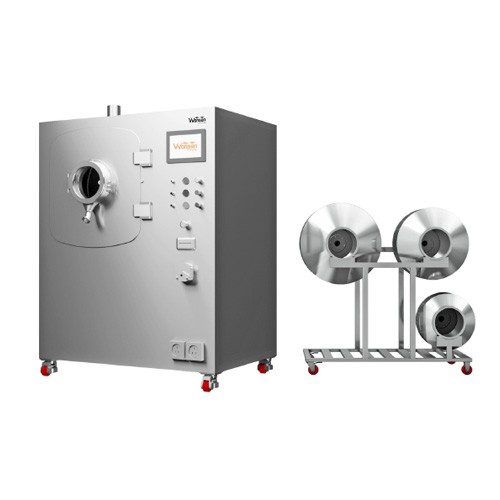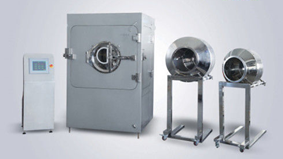A process is an application of coating composition to a moving bed of tablets with the concurrent use of heated air to facilitate evaporation of the solvent is the COATING process. The distribution of coating is accomplished by the movement of the tablets.
Techniques of Tablet Coating:
- Sugar Coating.
- Film Coating.
- Compression Coating.
- Microencapsulation.

- Sugar Coating:
The process of sugar coating, which has its origins in the confectionery industry is perhaps one of the oldest pharmaceutical processes still in existence. The process involves the deposition of aqueous sugar solutions onto the surface of the core tablet. Sugar coating involves many steps hence it requires experience, and in some cases elaborate equipment.
Though the stages differ from one manufacturer to another, a typical sugar-coating process involves the following steps:
- Sealing
- Sub coating
- Smoothing (or Grossing)
- Colouring/ Colour coating
- Polishing (or Glossing)

2. Film coating
Film coating involves the deposition of a thin layer of film-forming polymeric material on the tablet core. The process was introduced in the 1950s as improvement on the traditionally sugar-coating process. Film coating has proved successful as a result of the many advantages offered, including:
- Minimal weight increase (typically 2–3% of tablet
core weight) - Significant reduction in processing times
- Capacity to include organic solvents if required
- Increased process efficiency and output
- Increased flexibility in the choice of film-forming polymers
- Improved resistance to chipping of the coating
- Minimal weight increase (typically 2–3% of tablet

3. Compression Coating :
Compression coating also referred to as press coating or dry coating is the process by which a fine dry granulation is compressed onto a tablet core of drug.
Compression coating is essentially a dry process and thus may be suitable for coating tablets containing heat and moisture liable drug(s) such as aspirin and penicillins. This coating process has also been used to separate two incompatible active pharmaceutical ingredients; one contained in the tablet core and the other in the coating. Repeat action and sustained action tablets are produced by this coating method. Although traditionally a less popular process, compression coating has gained increased interest in recent years as a means of creating specialized modified-release products.
4. Microencapsulation :
The process involves the application of relatively thin coating to a small particle of solids, liquids or even gases in a micron dimension. The microcapsules thus formed range dimensionally between 3 – 800 μm in diameter with about 10 – 90 % w/w core.
Features
- Variable capacity (12” to 72” pan size)
- Scalability
- Improved design for higher efficiency
- Best in class spraying system
- Zero tablet discharge
- Pan design based on volume calculations
- Containment system for ONCO, OEL & hormonal drug
- Compatible for usage with PAT and NIR instrument
- 21 CFR compliance automation

